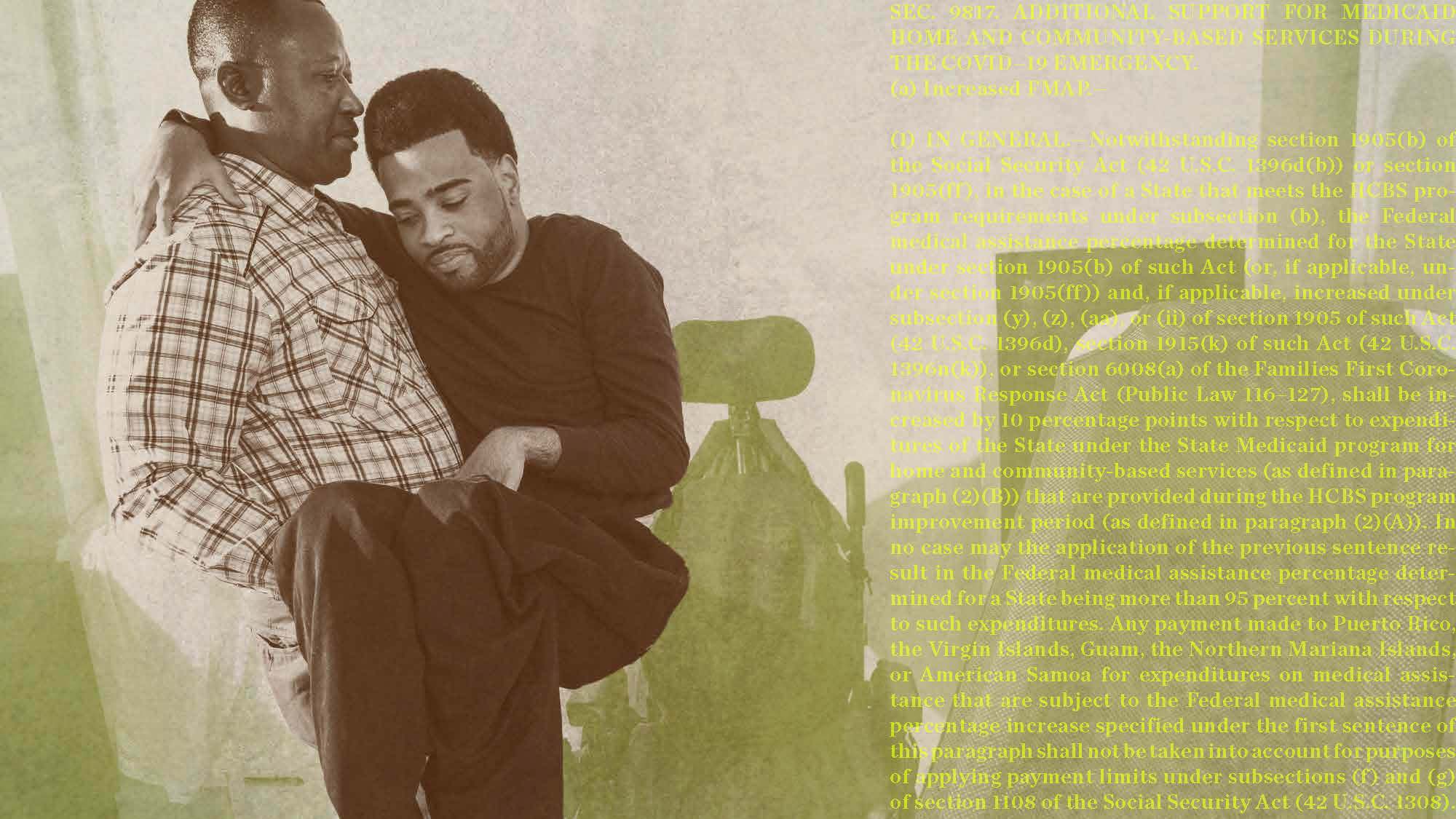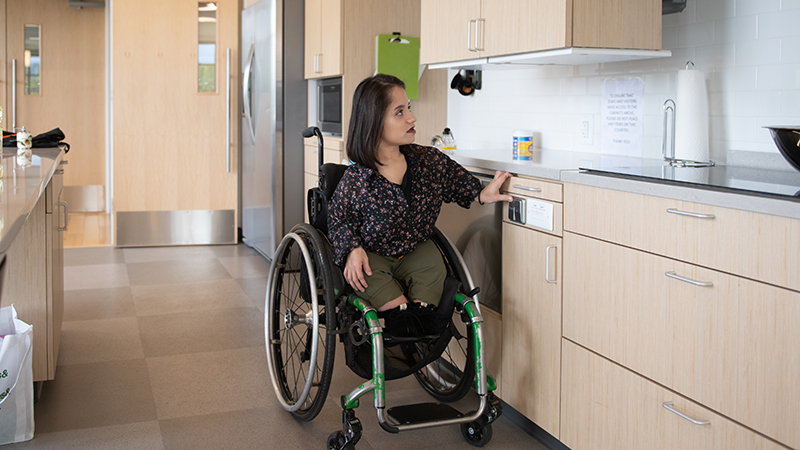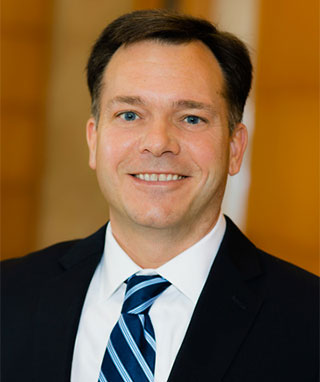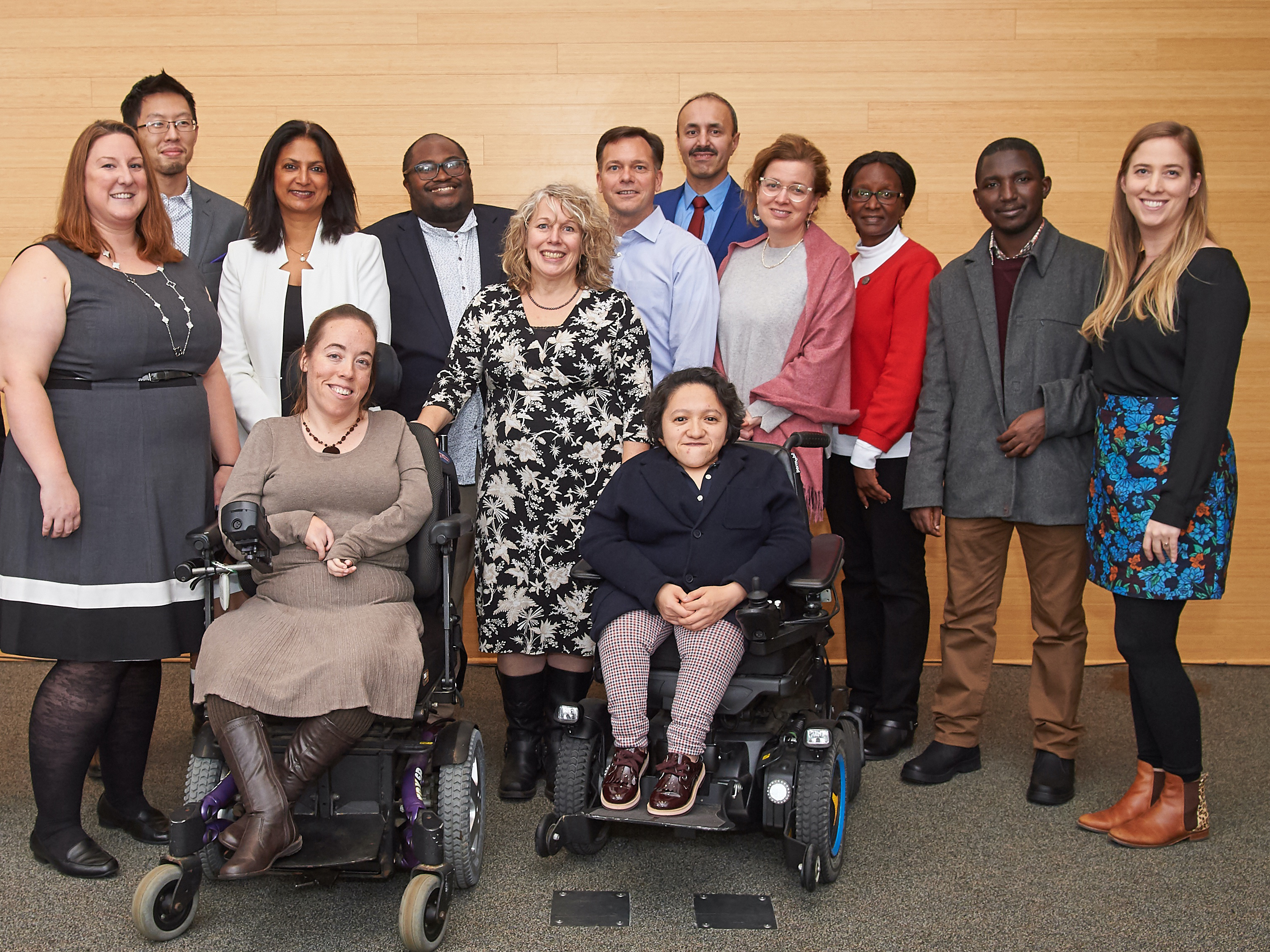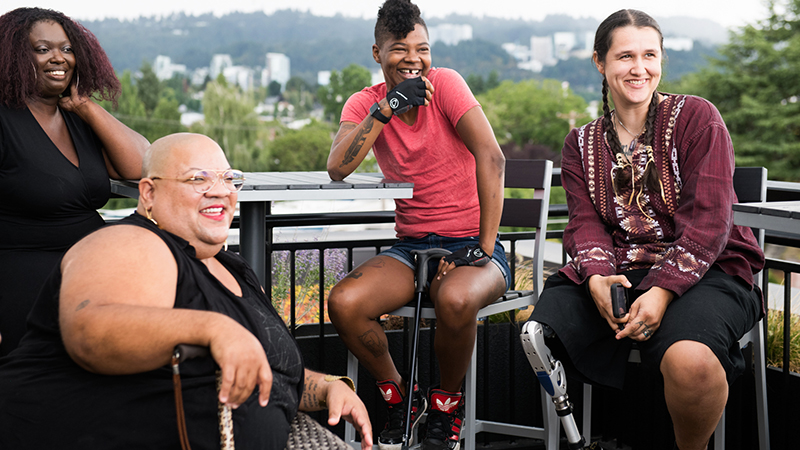By Karen Shih
Sandy Ho, MPP’22, a researcher at the Lurie Institute for Disability Policy and herself a disabled wheelchair-user, is one of millions of people who uses home- and-community-based services (HCBS) to enable her to live the independent life that she wants. Through HCBS, she has access to a personal care attendant who assists her with daily tasks while she works on her graduate degree and conducts research.
But when the COVID-19 pandemic struck and lockdowns were put in place, Ho became concerned. How could she ensure that she and her personal care attendant could continue to be safe as her attendant visited the grocery store, picked up medication, or visited other high-traffic places for essential errands that could expose them both to the virus?
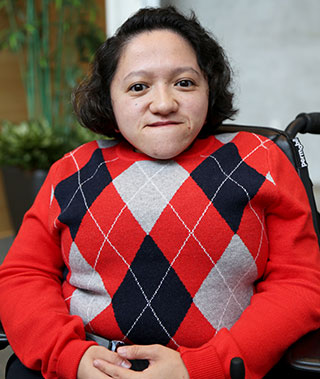
“As someone who is medically vulnerable, those questions were at the forefront of my thoughts,” she says.
Ho is far from alone in her concerns: 12 million people with disabilities and older adults in the U.S. need long-term services and supports and most live at home. Yet, the daily news never seemed to talk about other people in her position. The media covered the virus’ devastating effects on nursing homes, where nearly half of all COVID deaths occurred in the first half of 2020. But only 1.5 million people live in nursing homes and institutional settings.
“People receiving HCBS were almost an invisible population,” says Joe Caldwell, an expert on HCBS and director of the Community Living Policy Center (CLPC) at the Lurie Institute. “What was happening at nursing homes was appalling, but people who live in the community are also at additional risk.”
Because of the lack of visibility, these critical but chronically underfunded services were continually left out of federal and state relief packages—funding which could increase wages for home care workers and increase access to HCBS. That’s where CLPC has stepped up. Working closely with dozens of research and advocacy partners to gather and analyze data and increase awareness, the center has provided policymakers with research and technical assistance to pass vital legislation.
In mid-March 2021, the efforts of CLPC and its partners paid off in a big way: President Joe Biden signed the American Rescue Plan into law, providing much-needed relief to families—including the highest increase in HCBS funding in U.S. history. Just two weeks later, he unveiled his infrastructure agenda, called the American Jobs Plan, which proposes an additional $400 billion for HCBS.
U.S. Senator Bob Casey of Pennsylvania, chair of the Senate Special Committee on Aging, says, “I’m thankful for the tireless work of advocates and policy experts—like the Brandeis University Community Living Policy Center—that helped inform my bill, the COVID HCBS Relief Act, S. 151, which was included in the American Rescue Plan.
“The funding in the American Rescue Plan and the proposed investment in the American Jobs Plan are important steps toward making home- and community-based services available for every eligible American, ensuring older adults and people with disabilities have the opportunity to thrive, and strengthening the essential workforce that provides these services.”
Living with dignity and respect
People with disabilities have long been isolated and segregated from society. Even in recent history, throughout much of the 20th century, people with disabilities were sent to institutions—unable to live with their families, receive an education or contribute to the workforce.
“It’s pure and simple discrimination,” says CLPC research partner Mary Lou Breslin, co-founder and senior policy advisor of the Disability Rights Education and Defense Fund. “People with disabilities were confined to massive institutions that were dangerous and inhumane.”
As the disability rights movement took hold in the 1960s, advocates fought to mainstream people with disabilities. Meanwhile, older adults have also been pushing for policies and programs to allow them to age at home. HCBS is the key to making both possible.
Home- and community-based services (HCBS) encompass everything from skilled nursing care and pharmacy services, to adult daycare, meal delivery, transportation and assistance with dressing, bathing, and eating.
These services “provide the fundamental building blocks of a good life,” says Julia Bascom, executive director of the Autistic Self Advocacy Network (ASAN). “Without HCBS, people with disabilities who need support with personal care have to go without basic necessities.”
But a key component of HCBS is payment. Medicaid is the primary funder of HCBS. States are required to provide access to services in nursing homes to eligible Medicaid beneficiaries, but most states limit access to HCBS, resulting in waiting lists and unmet needs.
“Tons of research shows people prefer to stay at home and have supports for as long as possible, and research also shows it’s more cost-effective to keep people in the community versus going into institutions,” Caldwell says. “We’re trying to change policies to make it possible for people to live in the community and live with dignity and respect.”
That’s why the passage of the American Rescue Plan was such a big win for the Community Living Policy Center and the 12 million people who need these services. The HCBS provision increases the federal matching rate for Medicaid HCBS spending by 10%, about $13 billion, for one year beginning April 1, 2021.
Funds could be used by states to increase wages and overtime pay for home health care workers; provide sick, medical and family leave for workers; and help get people off the waiting list for Medicaid HCBS.
“There’s a lot of unmet need out there. There are about 800,000 people on waiting lists in states who need HCBS—some have been waiting for years,” says Caldwell.
The federal relief legislation comes on the heels of the 2020 year-end omnibus spending bill, which included three additional years of funding for the Money Follows the Person program, which helps states transition people from nursing facilities and institutions back into their homes with increased access to HCBS.
Combining the funding in the American Rescue Plan and the omnibus bill “gives states an incentive to shift from nursing home and institutional services to community-based services,” says Caldwell. Advocates are now working to build on these victories with additional funding to enhance HCBS access and strengthen the workforce providing services.
The Community Living Policy Center
The goal of the CLPC is to “impact policy and practice to advance community living for people with disabilities,” says Caldwell.
CLPC, which is funded by the National Institute on Disability, Independent Living, and Rehabilitation Research at the U.S. Department of Health and Human Services and housed at the Lurie Institute, conducts research on HCBS policies and programs, as well as barriers to access. The center works closely with advocacy groups, providing data and analysis as well as guidance for disability organizations conducting their own research.
“Our partners are often advocacy organizations, not traditional academic institutions. A lot of them are under-resourced and busy, responding to immediate needs. But they are closest to the ground which helps our research be more informed and useful to the disability community,” says Ho, who serves in a research project management role for CLPC.
One of their partners is the Disability Policy Consortium, whose team of disabled self-advocates conducts interviews with other people with disabilities about the services they receive.
“While their lived experience experts are very aware of the realities and challenges of accessing services, they might not have the research training to conduct interviews and analyze qualitative data. I help them with data collection and as they conduct these qualitative interviews,” Ho says.
This is a key reason why the Autistic Self Advocacy Network works with CLPC, says Bascom, who is autistic. “One of the things that makes CLPC so unique and so valuable is the way that it partners closely with disabled people ourselves. As a result, the work CLPC produces, in addition to meeting a high standard for research quality, is timely and nuanced and really reflects the lived experience of people with disabilities.”
Ho agrees. “This is the future of disability policy: More disabled people leading the conversation and doing the research,” she says.
Informing state and federal policies

Policies at every level of government affect the availability of HCBS in communities across the country. That’s why CLPC’s work goes beyond federal legislation, working with state-level partners such as Breslin of the Disability Rights Education and Defense Fund (DREDF), headquartered in California.
When the COVID-19 pandemic hit her state, Breslin quickly realized state and federal guidelines for crisis standards of care—which tell medical facilities how to ration care when necessary—discriminated against people with disabilities who contracted the virus.
She turned to CLPC for research to use in DREDF’s advocacy.
“The staff helped us come up with solid research arguments to call out discrimination, and because of that work, we were able to influence the way crisis standards of care were modified in California,” Breslin says.
In early 2021, Breslin focused on a new area: vaccine eligibility guidelines.
“People who receive HCBS are at as high risk of COVID disease and death as people over 65. But in federal and state priorities, HCBS people weren’t included,” Breslin says. “The only data on this topic was produced by CLPC and my organization, which was extremely helpful in our ability to advocate for policy changes in California.”
As of March 15, people with disabilities were included in priority vaccine allocation in California.
“Our partnership with the center has been invaluable to us,” says Breslin. “We’ve made advances in the disability rights arena that would not have been possible if these people hadn’t been collected under one roof.”
Looking to the future
Now, more than a year after the COVID-19 pandemic started, CLPC is finally starting to get access to data from Medicaid and health plans about the impact of COVID-19 on the HCBS community. Its researchers are also conducting qualitative interviews with people receiving Medicaid HCBS. The goal is to compare the experiences of people who had control over budget and hiring and the ability to determine necessary services, with those whose services are controlled by the state.
“We think people who had more control did better during the pandemic because they were able to hire family members or make sure they had someone they trusted in their home,” Caldwell says.
For example, living in Massachusetts, Ho is one of the people who is able to self-direct her HCBS services. That meant she could make sure just one person was working as her personal care attendant, rather than a different person sent by an agency each day, which reduced her risk during the pandemic. And because she was able to hire her own attendant and develop a strong, trusting relationship, they could discuss a safety game plan as the attendant ran essential errands. In addition, the center for independent living that provides access to her attendant was able to provide personal protective equipment and answer questions, creating a safer environment for them both.
“It’s a person-centered approach,” says Ho. “It gives me a sense of peace and comfort to know I can have control over these details.”
The CLPC team has also applied for a National Institutes of Health grant to pursue a 5-year project on the impacts of COVID on HCBS recipients, examining not just mortality, but vaccine access and mental health. In addition, CLPC is partnering with eight community-based long-term services and supports plans to gather COVID mortality data.
“We also want to break it down by race, ethnicity and gender,” Caldwell says. “There’s very little research on this population in the scientific literature, so we want to be able to look at racial and ethnic disparities in terms of access to services.”
Buoyed by new federal funding for HCBS and the possibility of more to come, the CLPC team is excited to see how its latest data and analysis can continue to improve the lives of millions.
Ho says, “Even before COVID, the disability community has been working toward more home- and community-based services and self-directed care. The pandemic has pushed the urgency even more.”

